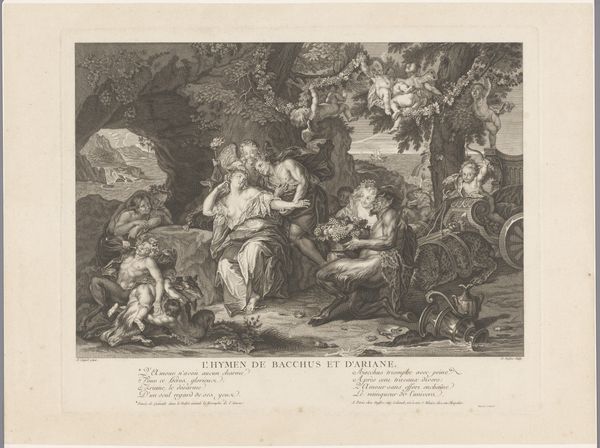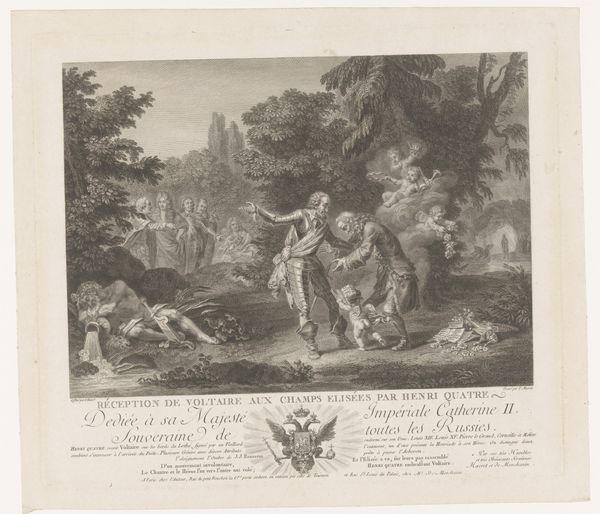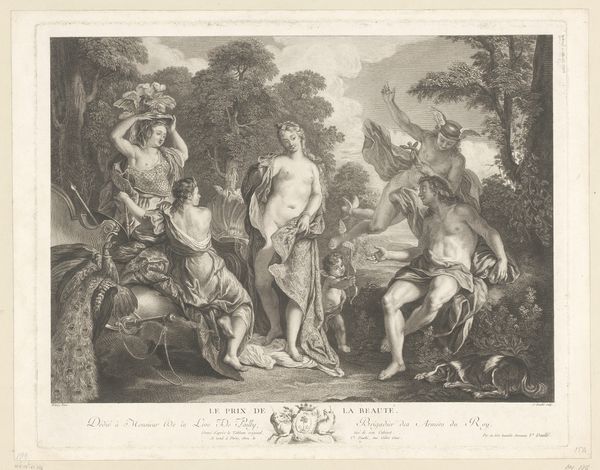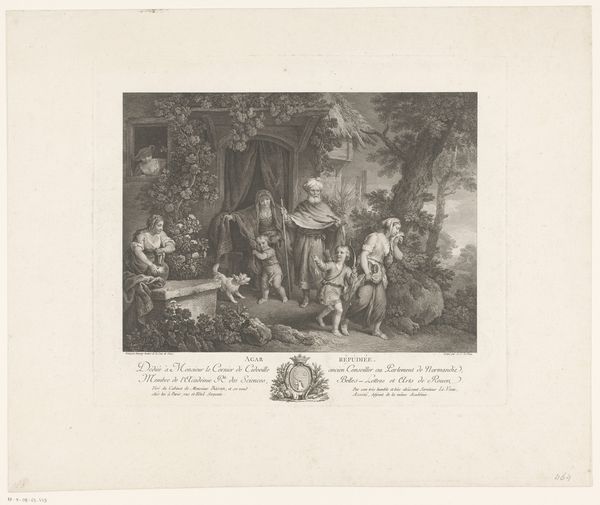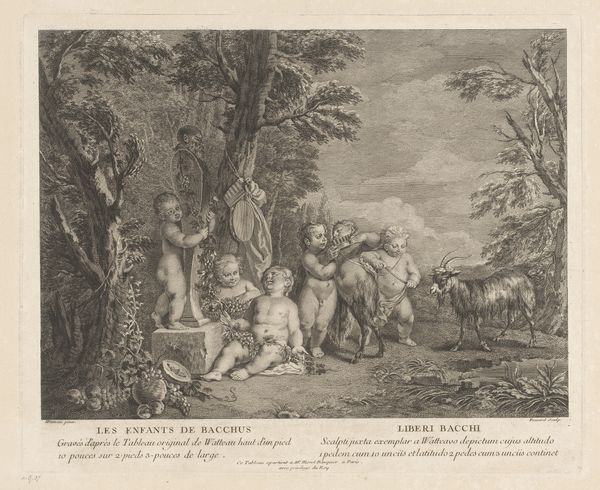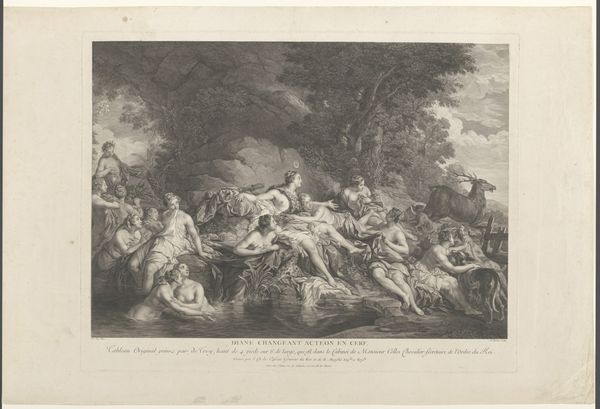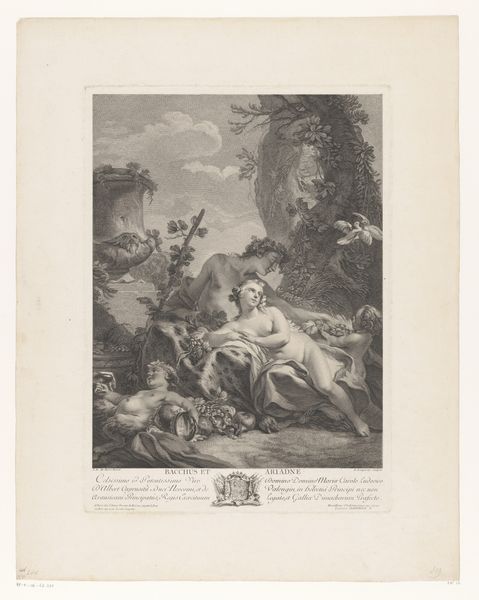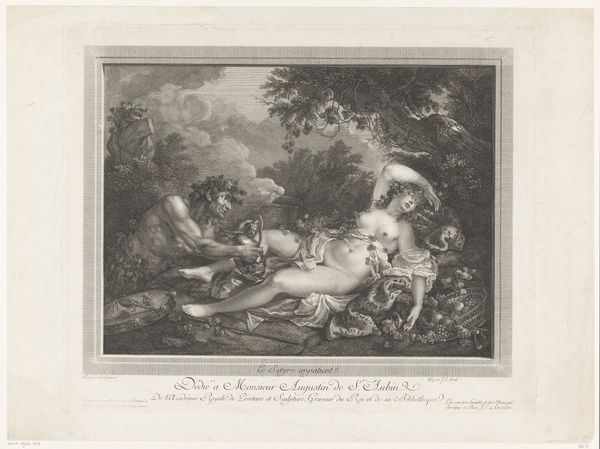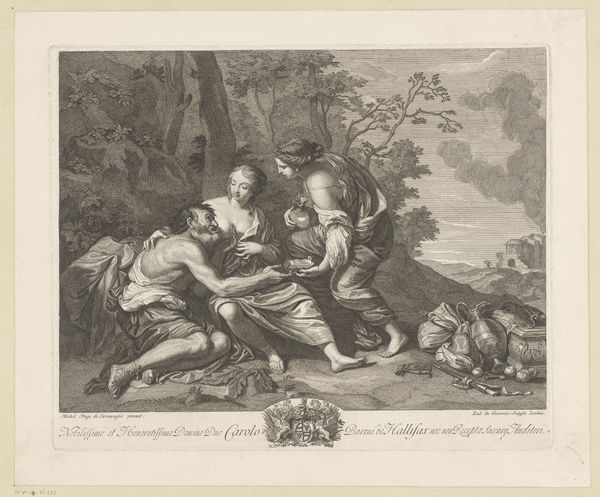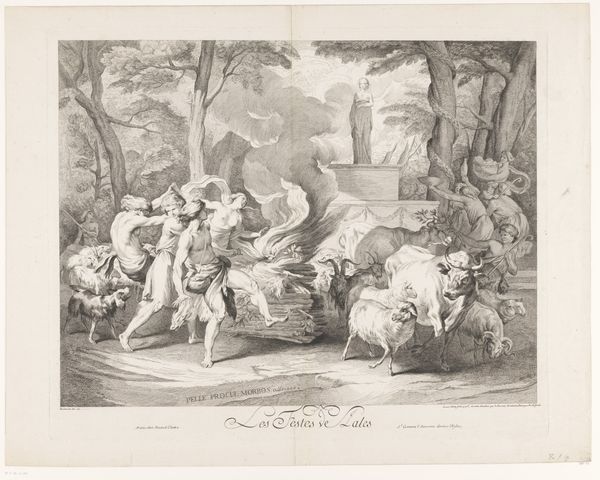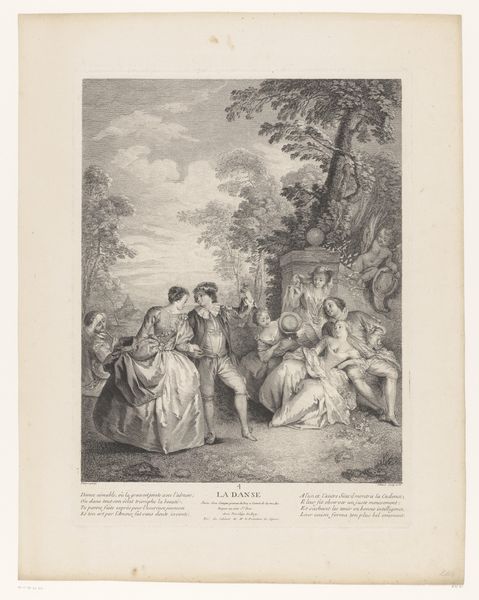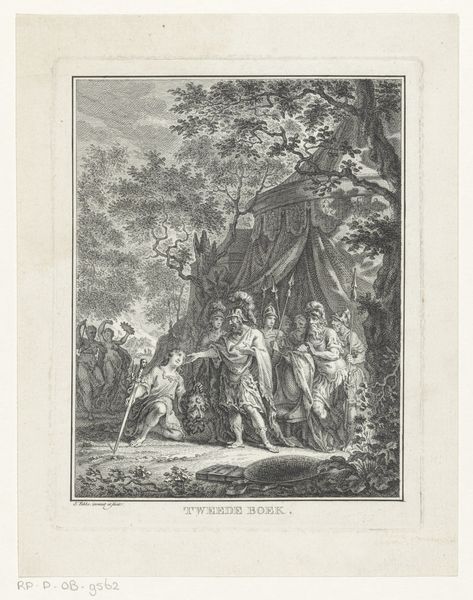
Dimensions: height 445 mm, width 535 mm
Copyright: Rijks Museum: Open Domain
Editor: This is "Diana Discovers Callisto's Pregnancy," an engraving from 1767. There's such a somber feel to the composition, and I’m struck by the vulnerability of the figures. How do you interpret this work? Curator: I see a visual embodiment of patriarchal power structures and the policing of women’s bodies. This engraving, rooted in a mythological narrative, presents us with a moment of exposure, literally and figuratively. Diana, the goddess of chastity, uncovers Callisto's pregnancy, a transgression in their world of female solidarity. How does the 'discovery' frame a wider socio-political issue, in your opinion? Editor: I suppose it highlights the consequences for women who deviate from prescribed social norms. There's this sense of betrayal and judgment that permeates the scene, right? Curator: Precisely. This unveiling becomes a public shaming, echoing historical and contemporary power dynamics where women's reproductive capabilities are surveilled and controlled. Considering this, how might we connect this image to ongoing debates about bodily autonomy? Editor: I hadn’t considered the connection to modern reproductive rights. It's unsettling to see how these power dynamics have persisted through art history and society. Curator: Art often reflects the values of its time. By examining these historical narratives through a critical lens, we can challenge those values and advocate for change. Editor: That’s a really insightful point. It's helped me think more critically about the message this artwork is communicating and its relation to contemporary social issues. Curator: And that, is exactly why we engage with art in the first place – to spark reflection, provoke dialogue, and incite change.
Comments
No comments
Be the first to comment and join the conversation on the ultimate creative platform.
